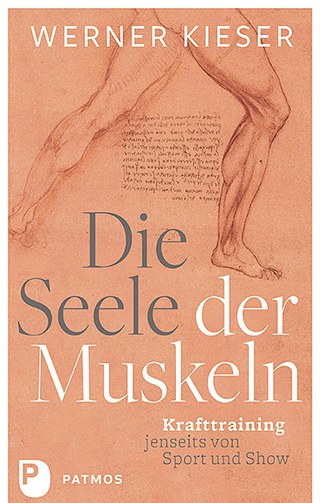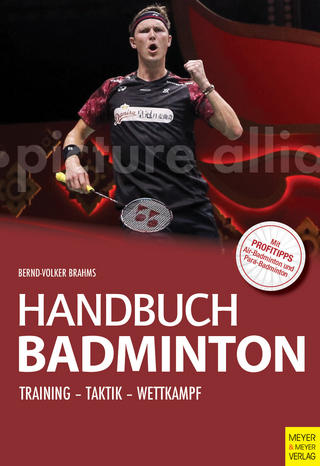
Attitudes and Perceptions toward Physical Education: A Study in Secondary School Students
Anchor Academic Publishing (Verlag)
978-3-95489-465-9 (ISBN)
Rolf Kretschmann is currently a secondary school teacher in Germany, teaching Physical Education and Philosophy. He is a former Professor of Kinesiology and Director of Physical Education Teacher Education at the University of Texas, United States. His research focuses primarily on educational technology, health promotion and interventions, as well as evidence-based practices in physical education.
Daniel Wrobel is currently a secondary school teacher in Germany, teaching Physical Education and English.
Text Sample:
Chapter, 1 Introduction:
Investigating physical education means to take all involved parties and individuals into account. Physical education teachers and their students will usually come into one's mind when thinking of direct involvement in regular physical education classes. Parents, principals, administrators, college level lecturers and professors, and policy makers may also be considered for mutual interactions and discourse regarding physical education.
Although students are certainly the primary recipients of physical education teaching efforts, only few research-oriented efforts have been attempted to tackle the students' perspectives regarding physical education on the contrary (Dyson, 2006). Despite the rich empirical research tradition on physical education, there is only little research on the point of view of the students, and their perceptions and attitudes towards physical education (Graber, 2001).
In 2006, the DSB published the SPRINT-Studie as one of the most recent and most frequently discussed German empirical investigation of physical education classes. The study examined several aspects of physical education classes such as curriculum, state of sports facilities and others (cf. Brettschneider & Kuhlmann, 2006, 12ff). The point of view of the students and their perceptions and attitudes towards physical education, however, was severely neglected. Besides the SPRINT-Studie (Deutscher Sportbund, 2006), almost no studies in the field of physical education classes exist in Germany. In contrast, on an international level, many investigations have been conducted, all of which focus on different aspects of physical education.
Those studies, which are concerned with the perceptions and attitudes of students towards physical education classes basically solely focus on the methods to examine perceptions and attitudes and the general shape of perceptions and attitudes (cf. e.g., Phillips & Silverman, 2012; Subramaniam & Silverman, 2000).
The importance of students' positive attitudes towards physical education emerges out of the suggestion that students who developed a positive attitude to physical education and physical activity will more likely adopt a physically active lifestyle (Solmon & Lee, 1996; Wallhead & Buckworth, 2004). In addition, a positive attitude to one subject, in this case physical education may also indirectly influence students' attitudes towards school and education in general (Bibik, Goodwin, & Orsega-Smith, 2007), as well as academic achievement (Howie & Pate, 2012).
The influence of different factors on the perceptions and attitudes of students was hardly taken into account. Since other studies in the field of physical education have shown that e.g., gender has a major influence on self-perception or motivation , it seems to be logical to conclude that several factors do influence the perceptions and attitudes of students, as well. The important question that needs to be examined therefore is, which factors influence the students' perceptions and attitudes towards physical education classes.
Starting from this question, several other important questions arise: how can perceptions and attitudes be measured? What are attitudes and perceptions? How can we define perceptions and attitudes? Are those perceptions and attitudes also influenced by the degree of physical and sporting activity? Are they influenced by the parents' or the friends' point of view.
These questions are especially interesting for teachers and future teachers. They should know how attitudes are formed and how they are developed in reality. This knowledge should help to understand complex contexts of physical education classes, as well as the varying behavior of students. Besides, it would be helpful to know how the different aspects of physical education classes influence the perceptions and attitudes of students. Content of the curriculum or the behavior of the teacher may be such aspects, only to name a
| Erscheinungsdatum | 18.07.2016 |
|---|---|
| Sprache | englisch |
| Maße | 155 x 220 mm |
| Gewicht | 264 g |
| Themenwelt | Sachbuch/Ratgeber ► Sport ► Allgemeines / Lexika |
| Naturwissenschaften ► Physik / Astronomie ► Theoretische Physik | |
| ISBN-10 | 3-95489-465-3 / 3954894653 |
| ISBN-13 | 978-3-95489-465-9 / 9783954894659 |
| Zustand | Neuware |
| Informationen gemäß Produktsicherheitsverordnung (GPSR) | |
| Haben Sie eine Frage zum Produkt? |
aus dem Bereich


